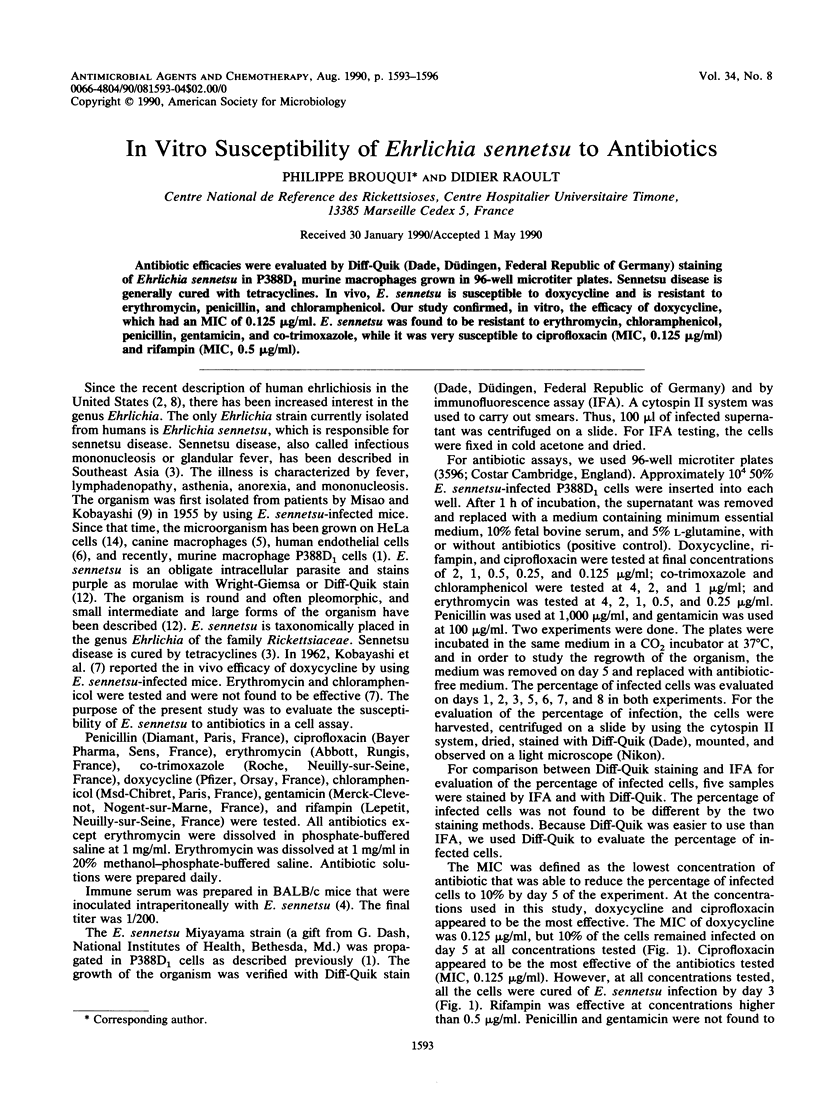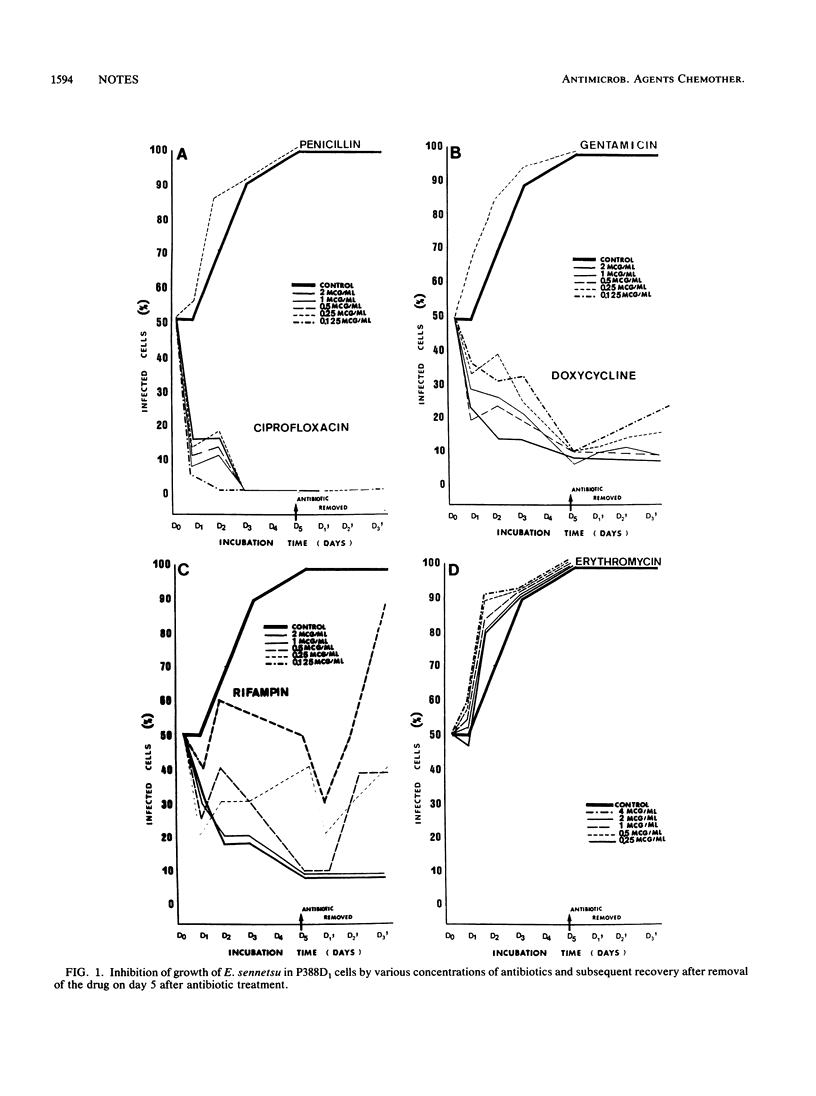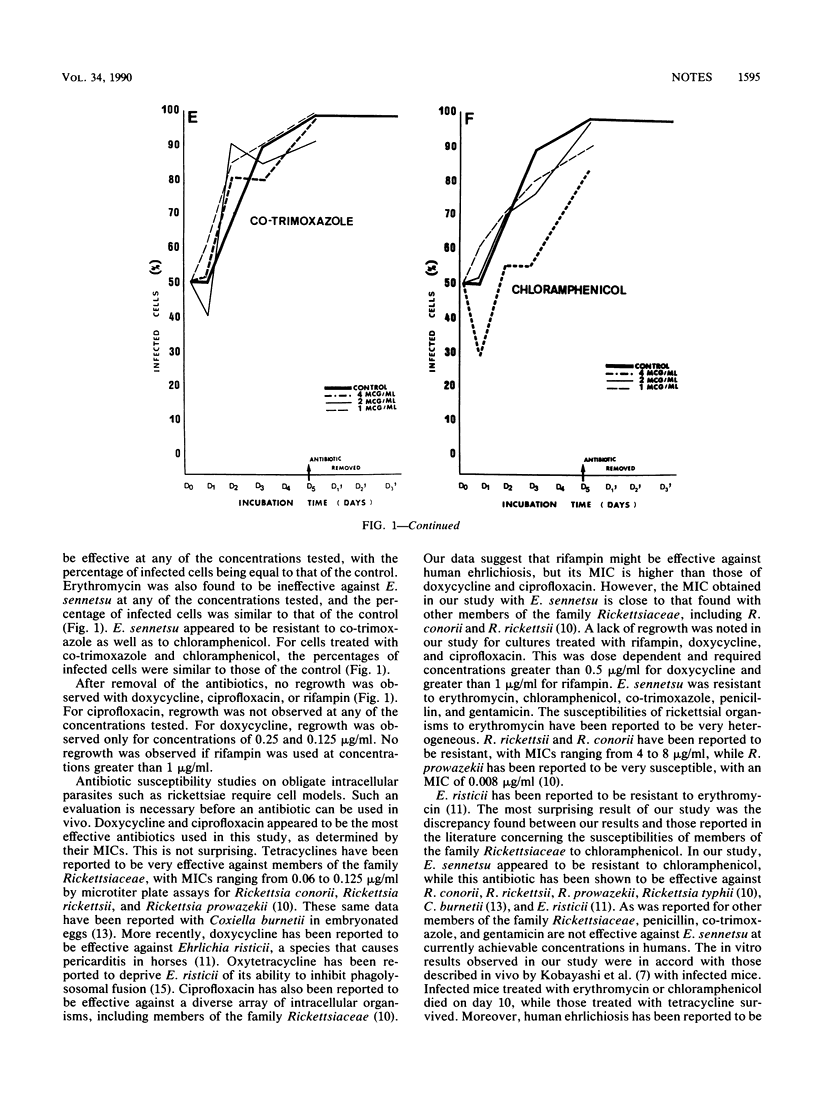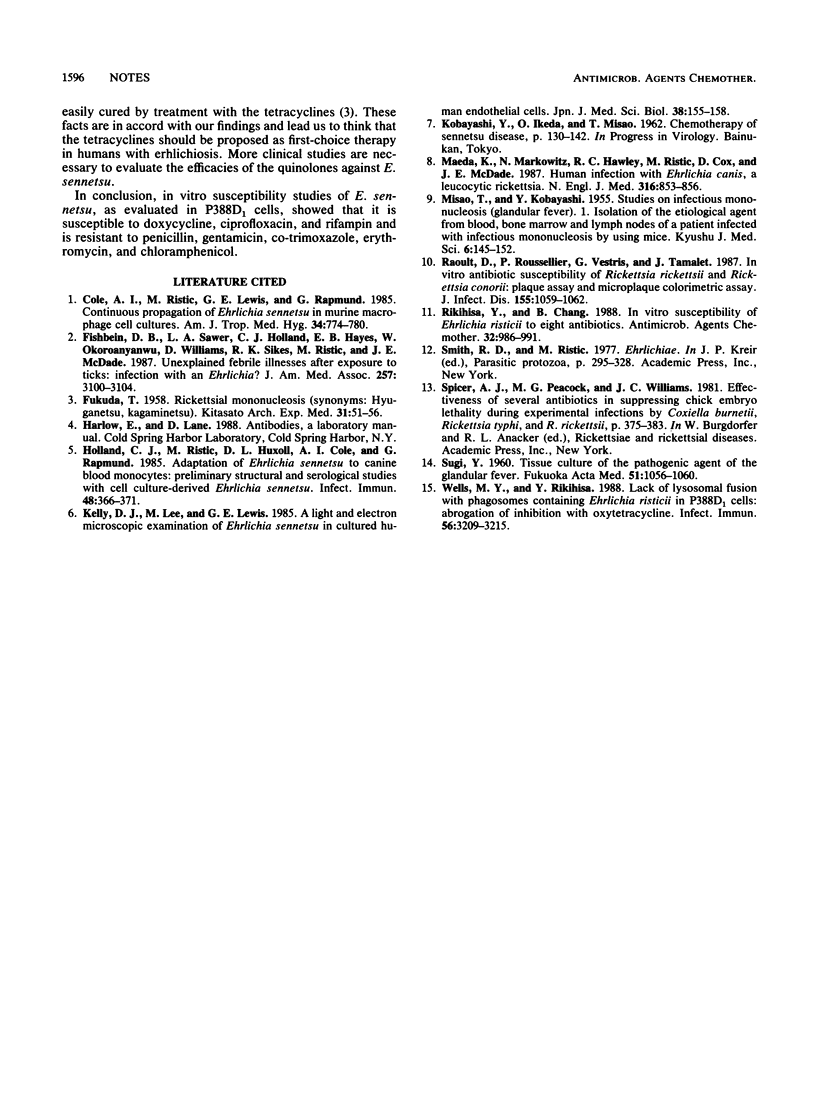Abstract
Antibiotic efficacies were evaluated by Diff-Quik (Dade, Düdingen, Federal Republic of Germany) staining of Ehrlichia sennetsu in P388D1 murine macrophages grown in 96-well microtiter plates. Sennetsu disease is generally cured with tetracyclines. In vivo, E. sennetsu is susceptible to doxycycline and is resistant to erythromycin, penicillin, and chloramphenicol. Our study confirmed, in vitro, the efficacy of doxycycline, which had an MIC of 0.125 micrograms/ml. E. sennetsu was found to be resistant to erythromycin, chloramphenicol, penicillin, gentamicin, and co-trimoxazole, while it was very susceptible to ciprofloxacin (MIC, 0.125 micrograms/ml) and rifampin (MIC, 0.5 micrograms/ml).
Full text
PDF



Selected References
These references are in PubMed. This may not be the complete list of references from this article.
- Cole A. I., Ristic M., Lewis G. E., Jr, Rapmund G. Continuous propagation of Ehrlichia sennetsu in murine macrophage cell cultures. Am J Trop Med Hyg. 1985 Jul;34(4):774–780. doi: 10.4269/ajtmh.1985.34.774. [DOI] [PubMed] [Google Scholar]
- Fishbein D. B., Sawyer L. A., Holland C. J., Hayes E. B., Okoroanyanwu W., Williams D., Sikes K., Ristic M., McDade J. E. Unexplained febrile illnesses after exposure to ticks. Infection with an Ehrlichia? JAMA. 1987 Jun 12;257(22):3100–3104. [PubMed] [Google Scholar]
- Holland C. J., Ristic M., Huxsoll D. L., Cole A. I., Rapmund G. Adaptation of Ehrlichia sennetsu to canine blood monocytes: preliminary structural and serological studies with cell culture-derived Ehrlichia sennetsu. Infect Immun. 1985 May;48(2):366–371. doi: 10.1128/iai.48.2.366-371.1985. [DOI] [PMC free article] [PubMed] [Google Scholar]
- Kelly D. J., Lee M., Lewis G. E., Jr A light and electron microscopic examination of Ehrlichia sennetsu in cultured human endothelial cells. Jpn J Med Sci Biol. 1985 Aug;38(4):155–168. doi: 10.7883/yoken1952.38.155. [DOI] [PubMed] [Google Scholar]
- Maeda K., Markowitz N., Hawley R. C., Ristic M., Cox D., McDade J. E. Human infection with Ehrlichia canis, a leukocytic rickettsia. N Engl J Med. 1987 Apr 2;316(14):853–856. doi: 10.1056/NEJM198704023161406. [DOI] [PubMed] [Google Scholar]
- Raoult D., Roussellier P., Vestris G., Tamalet J. In vitro antibiotic susceptibility of Rickettsia rickettsii and Rickettsia conorii: plaque assay and microplaque colorimetric assay. J Infect Dis. 1987 May;155(5):1059–1062. doi: 10.1093/infdis/155.5.1059. [DOI] [PubMed] [Google Scholar]
- Rikihisa Y., Jiang B. M. In vitro susceptibilities of Ehrlichia risticii to eight antibiotics. Antimicrob Agents Chemother. 1988 Jul;32(7):986–991. doi: 10.1128/aac.32.7.986. [DOI] [PMC free article] [PubMed] [Google Scholar]
- Wells M. Y., Rikihisa Y. Lack of lysosomal fusion with phagosomes containing Ehrlichia risticii in P388D1 cells: abrogation of inhibition with oxytetracycline. Infect Immun. 1988 Dec;56(12):3209–3215. doi: 10.1128/iai.56.12.3209-3215.1988. [DOI] [PMC free article] [PubMed] [Google Scholar]


